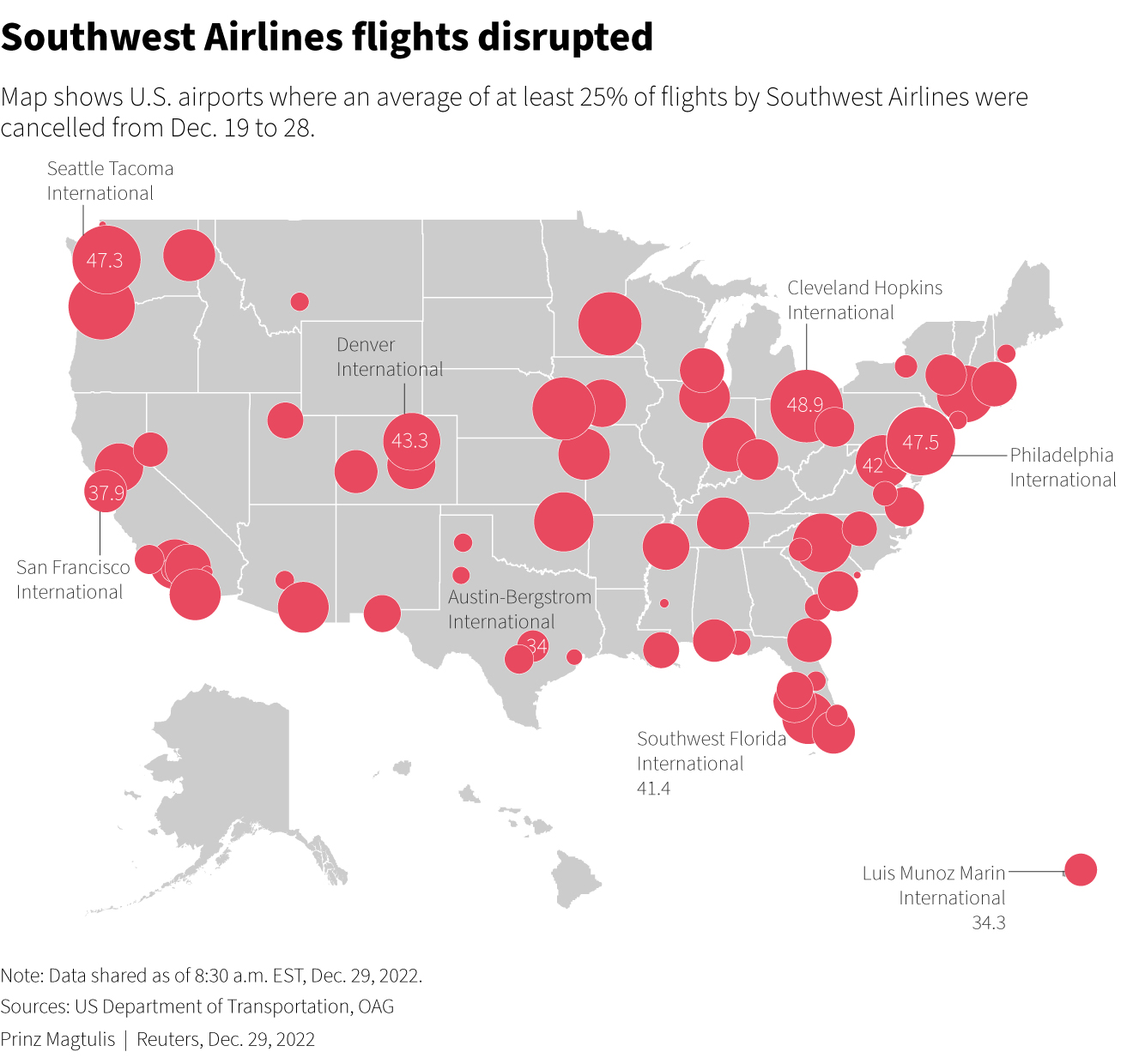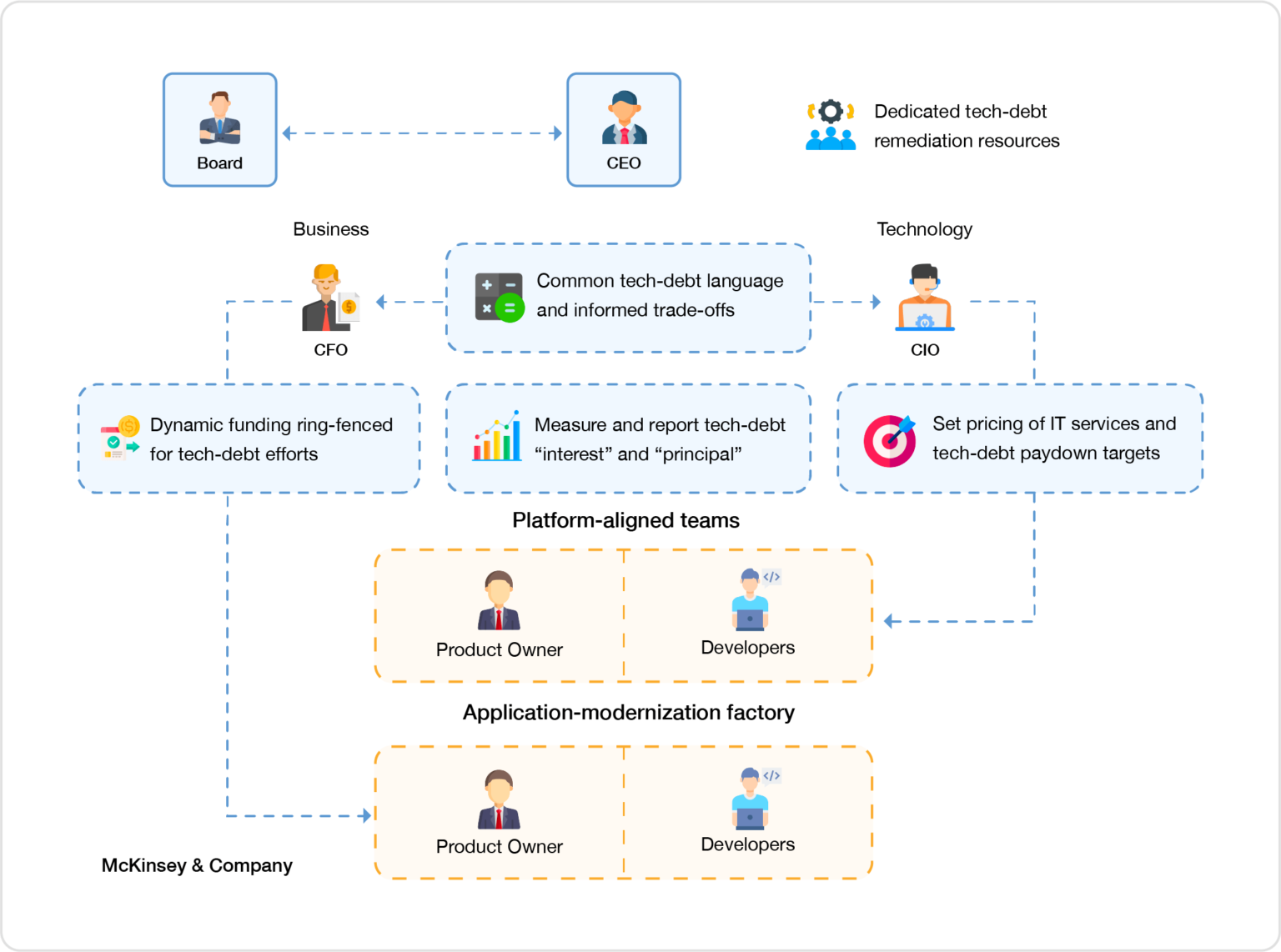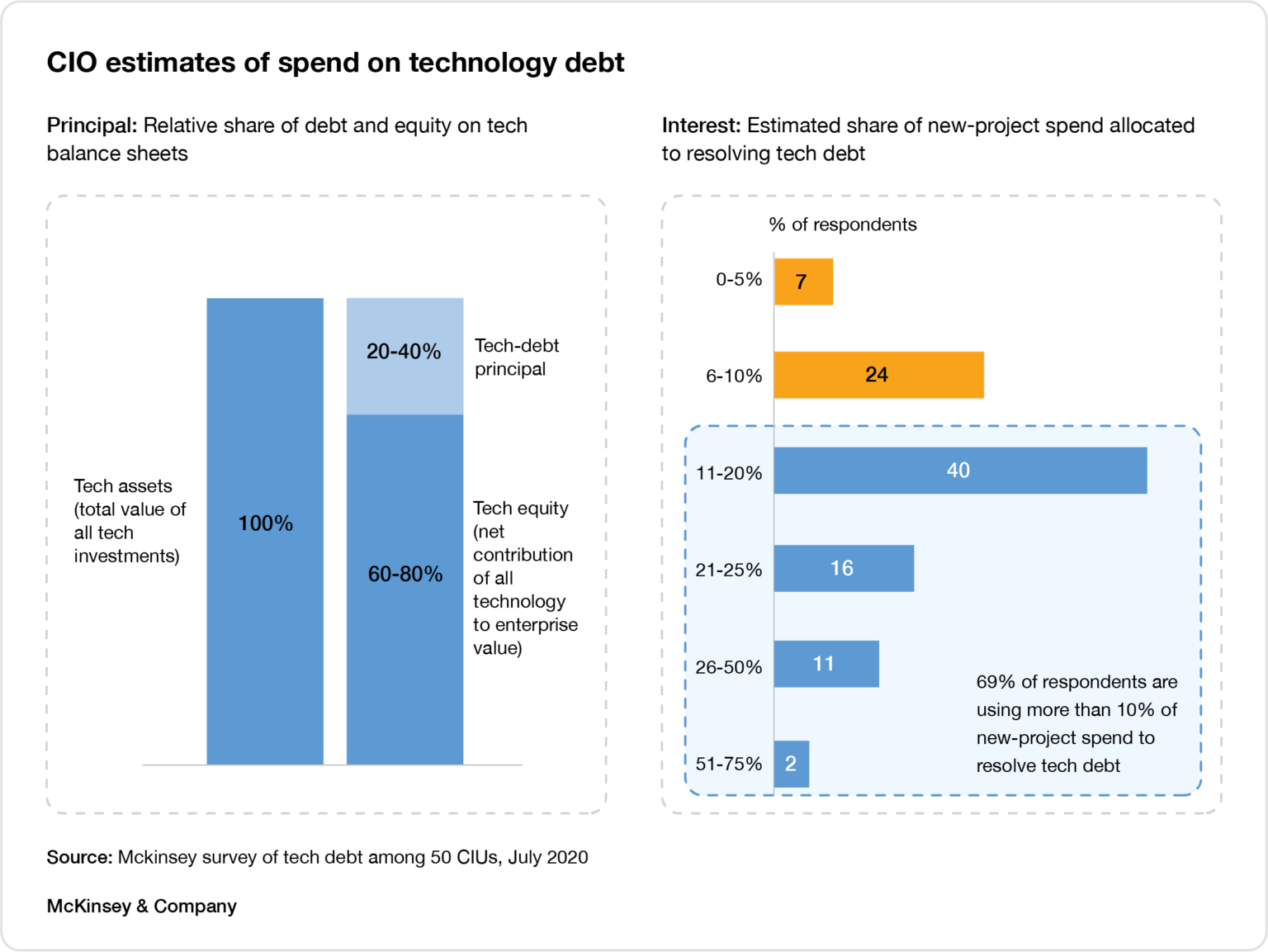Introduction
For the first time in 51 years of operations, Southwest Airlines experienced a “perfect storm” from a trifecta of factors - an intense winter storm, a risk-prone point-to-point operating model and outdated technology. 16000 flights were cancelled between December 19 to 28 which also happens to be the busiest holiday period of the year when demand peaks.
In this article, we will analyze how technical debt affected Southwest Airlines and what are the lessons that companies can learn from this incident. We will also discuss how regular technology assessments will prevent companies from getting impacted by outdated systems during a crisis or high levels of demand… the time that your customers need you the most.
How Technical Debt Disrupted Airline Operations?
Southwest Airlines began its digital transformation journey in 2017 when it committed $800 million to improve customer experience and employee productivity through software and workflow optimizations. $300 million was earmarked for “new technologies to support operations” and $500 million was allocated for developing a reservation system. The company stated that, by 2020, it aimed to boost earnings through software revamp that was to include new systems, updates, and upgrades that would allow the company to effectively track flights, passengers and cargo.
Southwest decided to develop a proprietary system known as “OpsSuite” to compete more effectively with JetBlue and Delta Airlines which were already using mobile devices to record information. OpsSuite was to enable employees to work together seamlessly on tasks such as tracking in-transit flights, informing ground crew to prepare gates for arrival and oversee maintenance in real-time instead of relying on outdated tools such as faxes to track progress.
Some of these challenges were not unique to Southwest and were seen in competing airlines as well. For instance, on January 23, 2017, United Airlines announced that it grounded all domestic flights at Newark International Airport, due to a computer glitch. This was not an isolated incident but a part of a series of systems failure that ranged from flight plan software losing functionality to losing access to reservation records. Air Canada and Porter Airlines also suffered delays and cancellations due to software glitches.
Fast forward to 2022 during a major winter event that hit airline operations during the week before Christmas, leading to a cancellation of 16,000 flights by Southwest. The company’s scheduling software systems were outdated and couldn’t handle the cancellations.
Michael Santoro, Vice President of the Southwest Airlines Pilots Association told CBS News that “The storm was the catalyst that started this whole event, but the major problem is that our scheduling IT infrastructure is outdated and can't handle the massive cancellations that had to happen that day when the weather event occurred. You get this snowball effect where it can't keep track of where pilots are, flight attendants are, and airplanes are.”
Why Do Such System Failures Occur?
- Outdated scheduling systems (aging code) that required modernization
- Lack of integration between different software systems to ensure smooth flow of data
- Insufficient automation and reverting to manual ops at the first sign of trouble
The first reason stated above is also known as technical debt.
What is Technical Debt?
Technical debt refers to the accumulation of technical challenges, complexities, and shortcuts that a software system incurs over time. It is a metaphor that compares the accumulated challenges to financial debt. Just like financial debt, technical debt can be a useful tool when used responsibly. However, if it is not managed properly, technical debt can accumulate and eventually become a burden that can hinder a software system's development and maintenance.
Before we proceed to study the impact of technical debt, we will understand the main causes:
- Rushing a project or taking shortcuts during development
- Tight deadlines or lack of resources
- Lack of understanding about the long-term consequences of certain decisions
- Lack of maintenance or neglect of the codebase
- Outdated or deprecated technologies being used
- Poor design or architecture decisions that make the codebase difficult to work with or modify
- Priorities for investment to go elsewhere (other projects, shareholder returns, etc.)
Managing Technical Debt
Ward Cunningham, author of Agile Manifesto, coined the term technical debt. He said, “Shipping first-time code is like going into debt. A little debt speeds development so long as it is paid back promptly with refactoring.”
Managing technical debt is an important part of software development, as it can help ensure that a software system is maintainable and able to evolve over time. This involves making strategic decisions about when to incur technical debt, as well as actively tracking and paying off existing debt.
Here is a list of best practices on how companies manage technical debt efficiently:
Metrics to Measure Impact on Business
Some of the ways that technical debt can negatively impact a business include:
McKinsey introduced a concept called Tech Debt Score (TDS) to quantify the scale, determine the optimum level and communicate the benefits of reducing tech debt. There are several metrics that can be used to measure the impact of technical debt on a business:
McKinsey further created an operating model that can help companies paydown technical debt and build resiliency.
An efficient operating model enables business / technology cooperation on tech-debt paydown.
Benefits of Technology Assessment
By conducting regular technology assessments, you can identify areas of your system that are contributing to technical debt and address them before they become major problems. Here are the things to consider when you perform technology assessments.
Conclusion
Modernizing legacy applications is the best approach to reducing technical debt and minimizing the impact of such debt on operational resilience. In 2019, Toyota North America decided to develop an integrated technology management framework that was to help the company:
- Build an inventory of applications by using Application Portfolio Management
- Rank applications based on criticality to business operations
- Determine software currency (how current are the critical software applications)
- Map applications with infrastructure requirements
- Implement disaster recovery for critical applications, data and infrastructure
The IT leadership team at Toyota North America ensured that modernization decisions such as code refactoring, architecture changes, programming language changes, and cloud migrations were based on periodic operational risk analysis.
In conclusion, the benefits of a technology assessment far outweigh the cost. Cost of an assessment will depend on the scale and complexity of application portfolio, but it is estimated to range from $10,000-100,000.
McKinsey reported in 2020 that more than 60% of CIOs surveyed reported a rise in technical debt over the preceding three years. 10 to 20% of IT budgets that were supposed to be allocated for new software projects is getting diverted to addressing issues arising out of tech debt. Also, the same study found that they can reduce the developer time paying the tech debt from 75% to 25%.
Tech-debt principal accounts for up to 40 percent of IT balance sheets, while most Companies pay more than 10 percent interest on projects.
If done right, technology assessments and a risk-adjusted roadmap for application modernization will bring down technical debt and allow companies to focus on developing new software that will unlock new revenue opportunities, improve operational efficiency, reduce costs and lead to better profitability.




